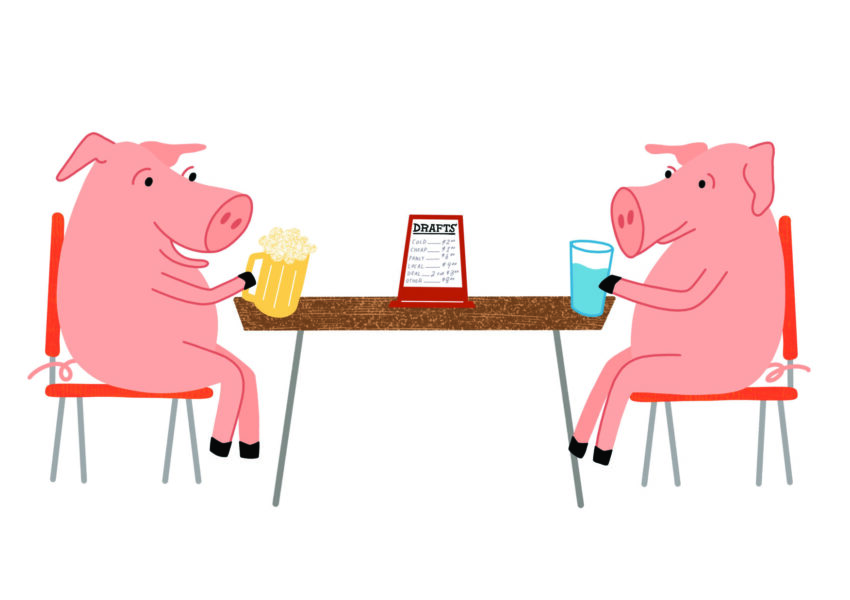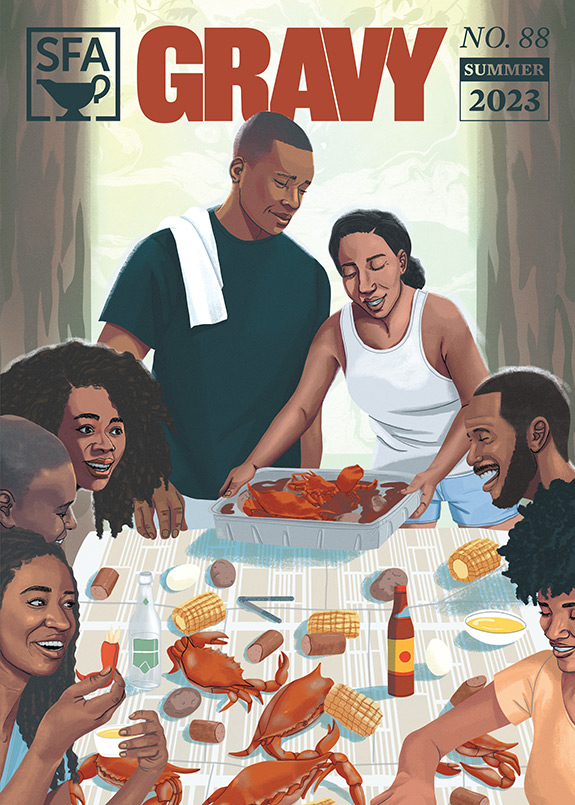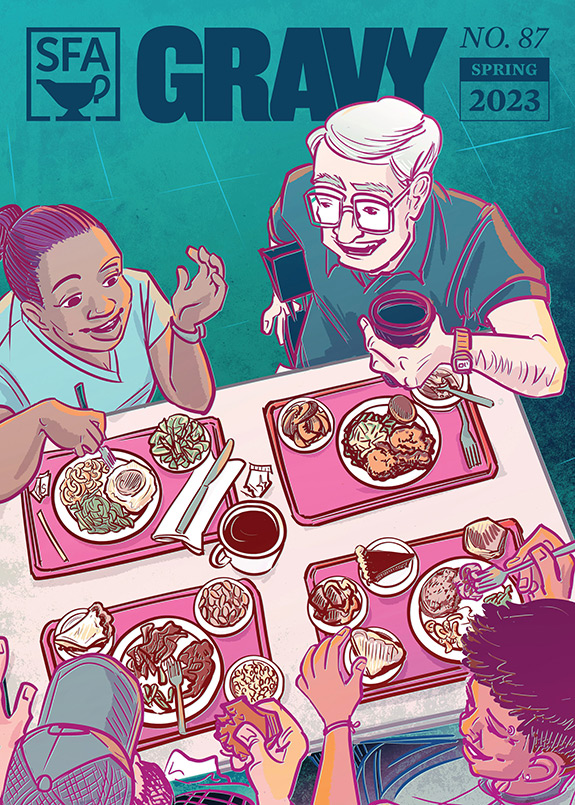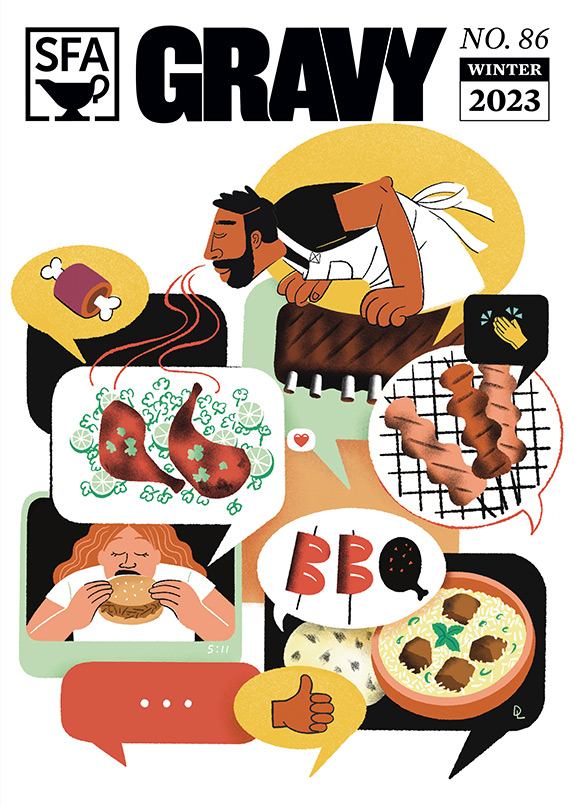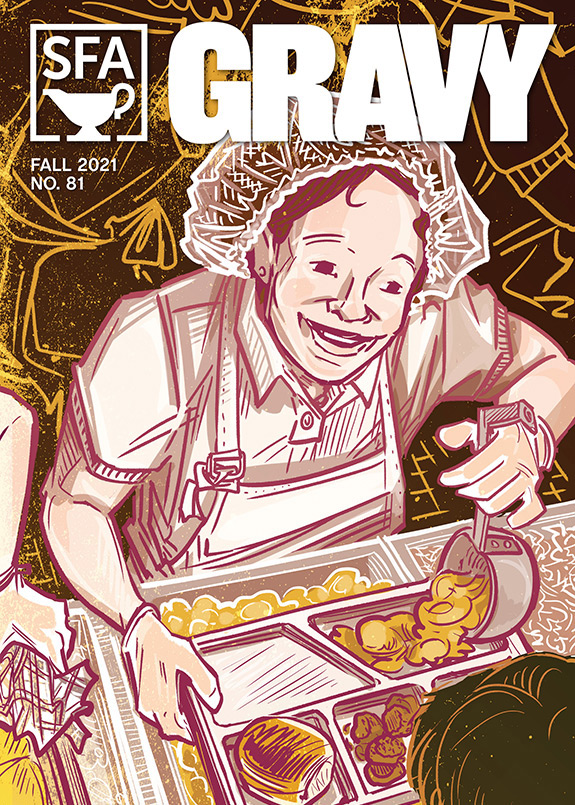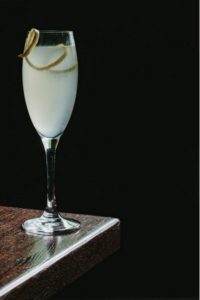
This piece first appeared in issue #56 of our Gravy quarterly. The author, Kat Kinsman, is senior editor at Food & Wine for digital and print, and the founder of Chefs With Issues. Thanks to SFA members for supporting the work of Gravy.
I’ll Take My Chances
There’s no wrong way to make a French 75
by Kat Kinsman
You will never make my favorite drink incorrectly. I will not allow that to happen. Not in a didactic, bossy, or witchy way—I don’t have printed recipe cards in my purse or the proportions tattooed up my forearm. I’m just fully prepared to enjoy whatever version of a French 75 you’d care to serve me. Life is too short to be doctrinaire about my cocktails or deliberately set myself up for disappointment. At least not when there are bubbles to be drunk.
I have a thing for this drink. It hits all my buttons: tart (usually lemon juice, sometimes lime), sweet (sugar, simple syrup, or orange liqueur), fizzy and fancy (Champagne or a reasonable analogue), strong—and here’s where it gets interesting. By the reckonings of most old-tymey bar books and fellas with with wax-tipped moustaches, the hard booze used can be either gin or Cognac. Either is right, so neither is wrong—and I might as well try plenty of ’em just to make sure. It’s not just because I love to sip a French 75 in the cool of a hotel lobby in a city where I’ve never been before, pair one (or two), with a rare, long weekday lunch that makes me feel like I’ve thieved an hour from the gods, or nurse one at a sleek, bland airport bar as my flight time gets shoved back, and back again.
It’s not just the drink; it’s the conversation and surprise that’s served alongside it, especially at a place where they’re not often ordered. I’m not a jerk, strolling into a beer hall or a honky tonk, demanding my twee little beverage. But if I see the makings on the bar, maybe a lightly abused piece of citrus and a stab at a cocktail list, I’ll take my chances.
“Uh, what’s in that?” the bartender might ask.
I rattle off the ingredient list—minus any proportions or serving suggestions—any way they interpret it is fine by me. I’m used to the look of alarm, and I’m quick to quell it. No, seriously, make it however you want to, and I guarantee I’ll love it.
The hundred or so that I’ve drunk have ranged from good to sublime, poured into flutes, coupes, snifters, Martini glasses, goblets, garnished with lemon peels that range from a waning crescent of zest to a meticulously carved Cthulhu that threatened to breach the bounds of the glass. Sometimes there’s fruit: A rookie bartender at a favorite local tavern stirred an orange wedge and a few brandied cherries into the mix after pouring my French 75 over ice in a pint glass.
His manager came scurrying over—Oh, god, I didn’t realize he was making that for you. Is it OK? I can always….
Are you kidding? It’s a triple serving of my favorite drink with a straw jammed into it. If you have to carry me home, I’ll be smiling and singing “La Marseillaise” the whole way there.
Not that a French 75 (it’s actually the name of a piece of WWI field artillery) is definitively French—there’s much debate over its place of origin. Some say it came into being at Harry’s New York Bar in Paris, or possibly the Hotel Chatham down the Rue Daunou. Others maintain that it came from an American fighter pilot or the Buck’s Club in London. Maybe a variation on a Tom Collins or a Champagne Cup, but possibly an upgrade on the popular French combo of Cognac and Champagne.
Should you be lucky enough to nab an empty stool at Arnaud’s French 75 Bar on Bienville Street in New Orleans, Chris Hannah—the (non-moustached) bartender who has likely poured more of them than anyone else on the planet—just might hand you a four-page, typewritten, imagined conversation with the long-dead and legendary bartender Harry Craddock, wherein they muse over those very origin stories.
I don’t recommend that, though. Not at first. Not until you’ve gotten a few dozen under your belt (not all at once) and fully appreciated the range of expression, the possibilities of of the mixological palette that can create a French 75. Because the one Chris will pour you might ruin you for the rest. It starts with a frosted tulip glass. Then Courvoisier VS, sugar, and lemon juice shaken and strained, then topped off with Moët and Chandon. Then a twist. Then bliss. Then regret.
When I visited Arnaud’s on Easter morning this year, I chased Hannah’s French 75 quickly with a cup of coffee and a massive seltzer, needing to lightly mar the memory. I get to New Orleans increasingly frequently, so I’m confident it won’t be my last, but knowing it’s out there makes me have a bit less abandon in my explorations. Like meeting the love of your life when you’re in high school and still have so much misguided kissing, screwing, and crushing to do. I’m not ready to settle down yet. I still have many years of wandering and tippling ahead of me, but now I know I’ll always have that taste of Paris. Or possibly London. And definitely New Orleans.


